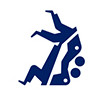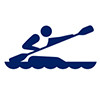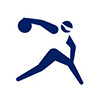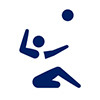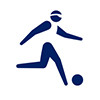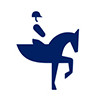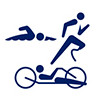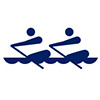
Paralympic powerlifting, also known as para powerlifting and para-lifting, is an adaptation of the sport of powerlifting for athletes with disabilities. The only discipline in Paralympic powerlifting is the bench press and is open to anyone with a minimum level of disability who can extend their arms within 20° of full extension during a lift.
Competition consists of men and women divisions:
• Men compete in the 49kg, 54kg, 59kg, 65kg, 72kg, 80kg, 88kg, 97kg, 107kg and +107kg divisions.
• Women compete in the 41kg, 45kg, 50kg, 55kg, 61kg, 67kg, 73kg, 79kg, 86kg and +86kg divisions.
In powerlifting, male and female athletes assume a supine position on a specially designed bench, and after taking or receiving the bar at arms-length, the lifter shall wait with locked elbows and the bar under control for the Chief Referee’s signal.
After receiving the signal “start”, the lifter must lower the bar to the chest, hold it motionless (visible) on the chest and then press it upwards evenly, with an even equal extension of both the arms with locked elbows.
When held motionless and controlled in this position, the audible signal “rack” shall be given and the bar is returned to the rack.
Then an immediate decision shall be given by the three nominated international referees through a system of white and red lights. Two or more white lights signify a good lift and two or more red lifts reflect a no lift.
Each athlete has three attempts, and upon discretion of the jury a fourth attempt may be allowed to achieve a new world record, but this attempt does not count towards the final competition result.

